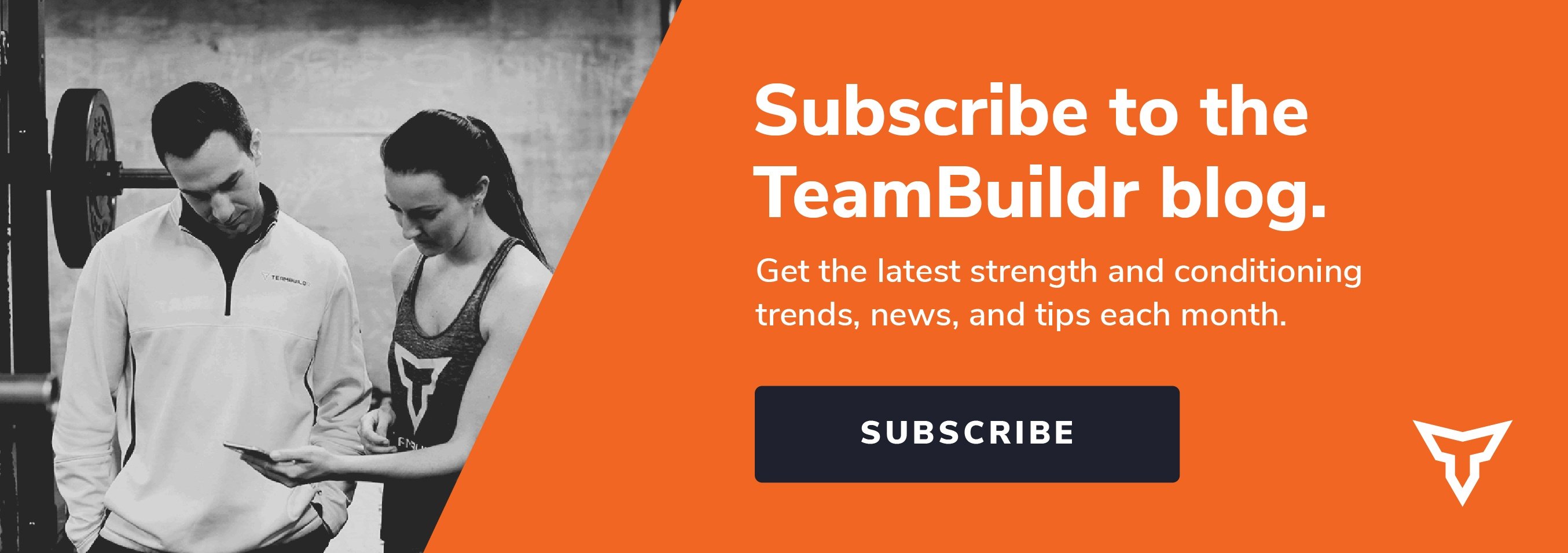Speed kills. Agility thrills. Together... well, I can’t think of another word that rhymes, but together they are a vital combo for almost any athlete out there. Being stronger and faster is never a bad idea. Recently, I heard Mike Boyle speak at the NHSSCA National Conference. He nailed it when he said, “If you want to be stronger, lift heavier. If you want to be faster, run faster.”
The beauty of that simplicity is awesome and so true. If you still need something to fill the cracks, there are some great exercises for speed and agility out there. I’ve taken a strong liking to sled training for speed for filling these cracks. It’s heavy. It’s fast. It’s fun. It works.
Before we get into these three go-to sled drills, let’s look at a bird’s eye view of speed, agility and break down how these drills can help.
Speed & Agility For Dummies?
What is speed? The rate at which an individual can run in one direction. Speed is stride length times stride frequency, mixed with power—which is (force x distance) / time.
Speed = stride length x stride frequency + ((force x distance)/time)
How fast can you apply force into the ground to propel yourself forward? How much force can you apply to the ground? How far can your stride take you and how fast can your strides occur?
Sure, it’s deeper than that but, in a nutshell, this is what makes speed. Trying to get to the meat and potatoes here, not bore you with science that you already know!
What is agility? Agility is an athlete's ability to change direction at a rapid pace. Part of this process is physical via actions like deceleration and re-acceleration. The other part of changing direction is non-physical reaction, meaning you must assess a situation while you're traveling one way and make a conscious decision to stop your momentum and redirect it into a completely different direction.
A lot of “speed and agility” drills we see these days do nothing to truly enhance these definitions above. Choreographed drills that look like clips from “Dancing with the Stars” mixed with really bad tap dancing don’t allow athletes to apply or absorb much force at all, and surely don’t challenge brain reactivity.
Other drills that look more appropriate may be getting turned into sloppy conditioning drills by not implementing proper rest and recovery periods after the explosive bouts. Remember, speed and agility relies heavily on the different application of forces and anaerobic energy. If you’re gassed, you can’t cash in on that. Turning plyos and SAQ work into cardio is something to be really careful for.
The reason I turn to the sled workout for speed so much is that it allows athletes to produce force quickly against a pretty moderate load. Again, this fills the cracks in the simple approach of Boyle’s “run faster to get faster” mindset.
Programming methods and drill creativity can handle the mental aspect of SAQ while the sled allows the athlete to dig in and create some true progress. Here are 3 exercises for speed and agility that have worked really well for us.
Sled Marching
Every coach has seen the Wall Drill or Wall Acceleration Drill that went so wrong so fast. A drill that is supposed to teach body angles and force production during acceleration quickly turns into a crappy postured cardio nightmare.
I love the idea of the Wall Drill, though. So transferring that into a sled exercise produced really awesome results.
To set up for a sled march, choose a light to moderate weight for the athlete. Position them in a forward lean stance supported by the sled, close to how the wall drill is typically executed. The athlete now marches with sprint mechanics in the lower body, making each footstrike combined with a forward lean propel the sled forward.
It’s important that the force production down and away is what moves the sled, not the athlete’s arms. Each step should land just under the hip, which is another advantage of this drill to the wall drill because it’s a little more applicable to real running.
Definitely exaggerate the movements here to get as much rhythm, force, and steps as possible. This has been a really helpful tool to teach forward body lean, foot placement, and improves acceleration speeds in athletes from youth to professional levels.
Sled Crossover Drag
This speed sled workout is great for getting lateral movement and can be trained fast and light or heavy and slow. Both ways will do wonders for the change of direction strength. Athletes compete in all three planes of motion so it’s always a good idea to incorporate those planes into training as well.
Set up any kind of strap or extension handle to a sled and position the athlete leaning in the direction they want to travel. The athlete should be facing to the side rather than straight ahead. The hand closest to the sled will have the handle. Moving at a slight angle away from the sled, plant, and go step-by-step executing a lateral run while dragging the sled.
This exercise can be manipulated to achieve whatever result you’re after. In this video, my feet are angled in the direction of movement, but you can also instruct athletes to keep their torso and toes facing outward. This requires more hip ER, IR, adduction and abduction on each leg—and also works better with the heavier load and lower rates of movement.
Simple answer: Do both. Put lateral force into the ground. Get athletes used to the movement and getting in and out of cuts during competition will start to look really crisp.
Sled Bear Crawl
Since we looked at lateral and linear running motions, I wanted to throw in something that is the foundation for both of them—core work.
As an athlete, having control of your center of mass is a huge factor in speed, agility, and injury prevention. Athletes moving in multiple directions and must be able to control their motions and redirect them when needed. Lacking core strength and/or stability will directly inhibit an athlete’s ability to do those things.
The Bear Crawl is one of the best bang-for-your-buck exercises I can think of. It has all the qualities you look for in a low-risk, high-reward movement. By adding a small amount of load behind your body, you can take the Bear Crawl to a new level of effectiveness.
By nature these are an “anti” exercise—you must resist excessive levels of spinal flexion and lateral flexion and extension. By training your torso to perform in this manner, you’re setting athletes up for a direct carry over to controlled movements during changes of direction.
We coach our athletes to do three things before every rep: reset (check to make sure you’re in a good position), reach (push your sternum away from the ground) and breathe (nasal inhale into the diaphragm). Take it slow and steady. Crush each rep. Notice the core strength and stability skyrocket.
Hopefully, these are helpful tools for your athletes and help fill the cracks of the much simpler run fast, lift heavy approach. Together these niche speed agility drills with big rock movements can really make a huge impact on athletic performance.
Subscribe to our blog
Subscribe to receive the latest blog posts to your inbox every week.
Related posts

How Important is "Sleep Quality" to Your Program's Performance?

Announcing Our 'Wearables Dashboard' for Coaches

